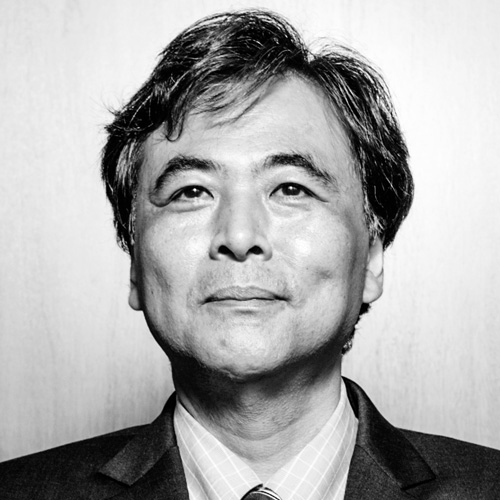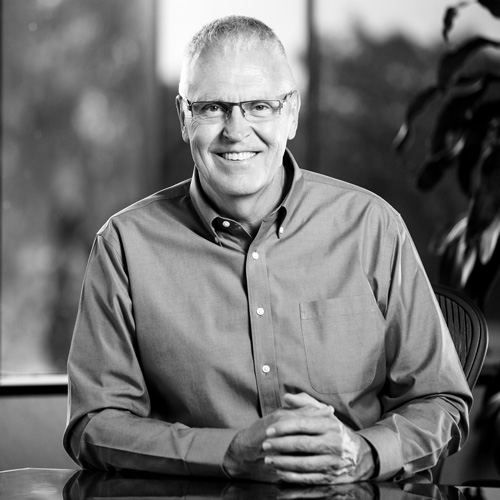Greg Skinner says that if you asked his family when he was growing up, they’d characterize him as “bossy,” an attribute he later learned doesn’t go over well in the business world. Skinner has been CFO of Landec since 1999. In the past sixteen years, he has had the opportunity to learn a lot about what leadership is and what it isn’t, partly because he has led the company through seven successful mergers and acquisitions. Landec’s unique history has also taught him to be nimble.

Skinner says Landec is unlike most companies in its willingness to change direction entirely, entering whatever industry or market that will take it to the next level. Initially, the company was in health care, and after several iterations, it is now primarily focused on the food and biomedical markets. What makes this versatility possible is Landec’s distinctive polymer technologies, polymers that change their physical characteristics based on changes in temperature, going from a solid to a liquid back to a solid again. The polymers can also change permeability and adhesion, making them useful in endless applications. Currently, the company is looking for new ways to use the technology so they can break into untapped markets.
“We’re experiencing success now, but it wasn’t always like this,” Skinner says. “The year I joined Landec, it had $2 million in revenues and a $4 million loss. Small revenue, big loss. Landec became profitable in 2003 and has been profitable ever since, but that means, since Landec was founded in 1986, it took the company seventeen years to get to profitability. We’re willing to change shape and try new things and if and when those things don’t work out, we’re willing to say that we made a bad call—and then we move on.”
According to the CFO, his primary point of focus is organic growth, and that can take shape several different ways. It can mean developing new products with Landec’s existing technology, using its technology to deliver products in new ways, or brainstorming how to apply its technology to new industries. Of course, it also means acquisitions, something Skinner and the rest of the Landec team has proven to be very good at. Landec is “seven for seven,” with Skinner being the lead or a very key player for each acquisition. The chief financial officer attributes this success to being very disciplined.
The ideal acquisition for Landec will be synergistic with its existing businesses. Ideally the target company should offer similar technologies or products, have a similar distribution approach, or overlapping customer base—that’s the first step.
“The second thing is we’re not afraid to walk away. We’ve walked away from potential acquisitions we’ve put a year into,” Skinner says. “If we had a list of eight must-haves and in the end we could only get seven of them, we’ll walk away. Probably 90 percent of companies would move forward if they ended up with seven out of eight, but not us. It requires a great deal of discipline, but it’s how we avoid doing bad deals.”
“We’re not afraid to walk away. We’ve walked away from potential Acquisitions we’ve put a year into.”
The growth Landec has experienced recently comes with its own set of challenges. Skinner says he’s a person who adapts to change and thrives in a fast-paced environment, but those things don’t come so easily to a lot of people. For so long, Landec operated as a small company because it was a small company. That’s no longer the case, and it has required some adjusting.
“Things have changed relatively quickly. We’re still struggling with realizing we’re not a small company that has to squeeze six pennies out of a nickel, so it can be hard to convince people who are used to operating that way that we need to invest in larger facilities, new systems, more people,” Skinner says.
And it’s true, a company who once struggled to make payroll will express a great deal of apprehension when it comes to building a new, $25 million processing facility, for example. The old fears of not being able to make it creep in, but as Skinner says, to continue in the direction Landec has been heading and to be successful as a larger company, major investments need to be made.
These investments aren’t just financial. Facilities, equipment, systems, talent, controls—a strategic approach to all of these investments must be developed to ensure continued success. So much of what the company was and how it operated must be left behind so Landec can grow. The things that can grow with Landec will stay; the things that can’t? They will be left behind.
“Not only is this not the industry, but this isn’t the company to be rigid,” Skinner laughs. “You must be willing to change. I’m fifty-four, and I’m still learning and growing and though I’ve accomplished a lot of my goals, I still have one major one: I want to see Landec become a billion-dollar company. I think we can get there.”














